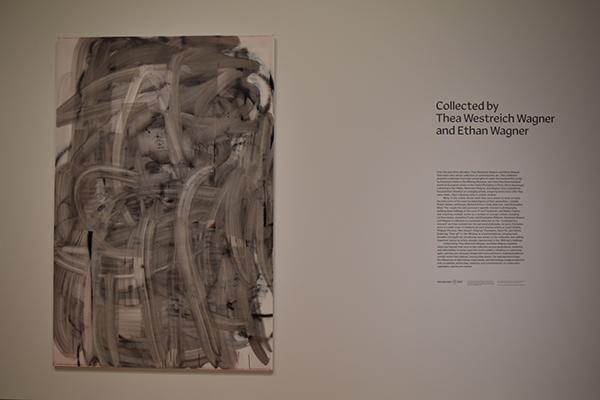Massive gallery at Whitney chooses quantity over quality

Collected by Thea Westreich Wagner and Ethan Wagner is the latest exhibition at the Whitney Museum of American Art.
November 23, 2015
The Whitney Museum of American Art debuted “Collected by Thea Westreich Wagner and Ethan Wagner,” an enormous gallery of over 800 works since the 1950s, on Friday. Despite a handful of standouts, they overshadowed by the overwhelming amount of work that does not have enough craft or insight to justify inclusion in any serious museum’s collection.
The exhibit is most striking when walked through, without pause for observation. The pure expansiveness of the exhibit’s diversity is impressive, with each room seemingly full of strikingly different work. The problems with the gallery become apparent only when each work is observed individually.
Abstract paintings suffer most from individual observation. Aside from a few Christopher Wool paintings that experiment with texture in an interesting way and a large Laura Owens painting that makes good use of an Easter color palette, there are very few pieces that leave a lasting impression. One room is devoted to what the museum calls European Industrial Art and is filled with displays that look more like wallpaper than conventional paintings.
Much of the work in the gallery aims to comment on modern media and popular culture. One work by Jeff Koons recreates a rum advertisement, and several works by Richard Prince take aim at the Marlboro man. There are two basic flaws with this setup. One is that the paintings, as a collection, are not very clever as satire, with a tendency toward obvious jokes. Another is the satire comes off as hypocritical because of how it glamorizes the commercial culture that it claims to object to. This reflects the gallery’s ability to function only from cursory glances, due to the difficulty in balancing a coherent theme throughout the 800 works.
Some pieces stand out for their shock value. Photographs by Phillip Lorca-Dicorcia show male prostitutes staring vaguely into the distance. One by Larry Clarke, most well known for his film “Kids,” shows a man receiving oral sex. In this and much of the rest of the photography a need to appear daring covers up a lack of compositional talent.
There are a handful of worthwhile things on display. The best is a small photograph by Diane Arbus, “Puerto Rican Woman With Beauty Mark.” Arbus captures the fierceness and the strength of the woman with a straight-forwardness that is very rare in the exhibit. Some photographs of life in the west by Robert Adams are very enjoyable. Philippe Parreno and Rikrit Tiravanija have a collection of dolls made to resemble themselves and some of their friends that is very striking and funny.
The overall impression of the exhibit is that of a bloated spectacle. The exhibit is an example of the Whitney’s bend to pressure of drawing in large crowds with large exhibits, rather than curating thoughtful ones.
The curation by Thea Westreich Wagner and Ethan Wagner runs until March 6, 2016.
A version of this article appeared in the Nov. 23 print edition. Email Tony Schwab at [email protected].























































































































































